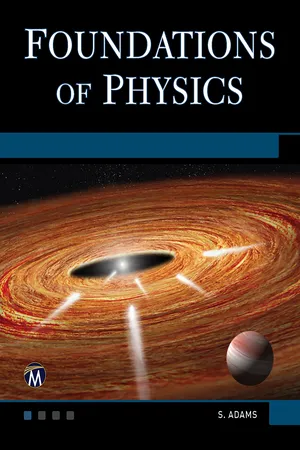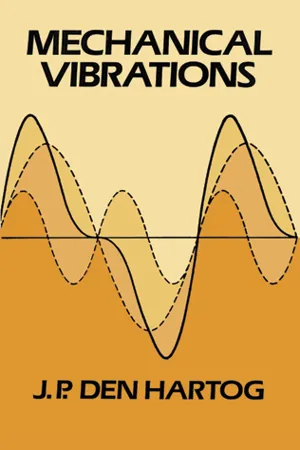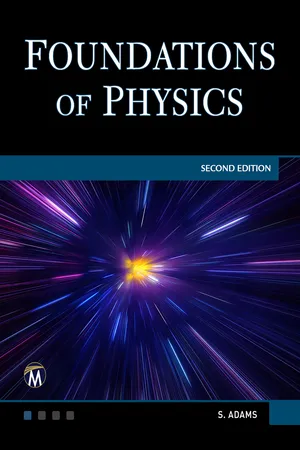Physics
Superposition Theorem
The Superposition Theorem states that in a linear system, the response caused by multiple stimuli is the sum of the responses that would have been caused by each stimulus individually. This principle is widely used in physics to analyze the behavior of complex systems by breaking them down into simpler components and then combining the individual responses.
Written by Perlego with AI-assistance
Related key terms
Related key terms
1 of 4
Related key terms
1 of 3
3 Key excerpts on "Superposition Theorem"
- eBook - ePub
- Steve Adams(Author)
- 2019(Publication Date)
- Mercury Learning and Information(Publisher)
15Superposition Effects15.0 Superposition EffectsSuperposition is what happens when two or more waves are present at the same point. This might occur because they originate from different sources or because of reflection. If the waves are of the same type, the resultant disturbance at that point is the vector sum of the disturbances from each individual wave. This is called the principle of superposition. We can determine the effects of superposition graphically, by adding phasors or by calculation. Many important phenomena are linked to superposition, including interference and diffraction and the formation of standing (stationary) waves.15.1 Two-Source InterferenceIf waves of the same type with equal wavelength, frequency, and amplitude are emitted from two sources placed a short distance apart (comparable to a few wavelengths), then a regular interference pattern is formed. The pattern consists of regions where the waves reinforce to produce maximum intensity (constructive interference) and regions where they cancel to produce minimum intensity (destructive interference).The famous double slit experiment carried out by Thomas Young in 1801 provided strong evidence for the wavelength of light and enabled Young to calculate its wavelength. A similar setup with sound can be used to demonstrate superposition patterns and, in a modified form, to create noise-cancelling headphones.In order for stable clear interference effects to be created, the two sources must be coherent.Coherent sources maintain a constant phase relationship.This means that they must be the same type of wave and have the same wavelength and frequency. The sources do not have to be in phase, but the phase difference between them must be constant. They must also have comparable amplitudes; if one wave has a much greater amplitude than the other, then variations in intensity will be hard to detect. - eBook - ePub
- J. P. Den Hartog(Author)
- 2013(Publication Date)
- Dover Publications(Publisher)
CHAPTER 8SYSTEMS WITH VARIABLE OR NON-LINEAR CHARACTERISTICS8.1. The Principle of Superposition. All the problems thus far considered could be described by linear differential equations with constant coefficients, or, physically speaking, all masses were constant, all spring forces were proportional to the respective deflections, and all damping forces were proportional to a velocity. In this chapter it is proposed to consider cases where these conditions are no longer true, and, on account of the greater difficulties involved, the discussion will be limited to systems of a single degree of freedom. The deviations from the classical problem Eq. (2.1) , page 26 , are twofold.First, in Sees. 8.2 to 8.4 , we shall consider differential equations which are linear but in which the coefficients are functions of the time. In the remainder of the chapter non-linear equations will be discussed. The distinction between these two types is an important one. Consider the typical linear equation with a variable coefficient:which describes the motion of a system where the spring constant varies with the time. Assume that we know two different solutions of this equation:Then C1 φ1 (t) is also a solution andis the general solution of Eq. (8.1) . Any two known solutions may be added to give a third solution, orThe principle of superposition holds for the solutions of linear differential equations with variable coefficients.The proof of this statement is simple.Multiply the first equation by C1 and the second by C2 and add:This shows that [C1 φ1 (t) + C2 φ2 (t)] fits the differential Eq. (8.1) and therefore is a solution.In mechanical engineering it is usually the elasticity that is variable (Eq. 8.1). There is, however, one important case where the mass is variable with time (Fig. 5.10 , page 184 ). This case can be discussed on the same mathematical basis as that of variable elasticity, provided damping is absent. We havewhere m(t) is the variable mass. Dividing by m(t - eBook - ePub
- Steve Adams(Author)
- 2023(Publication Date)
- Mercury Learning and Information(Publisher)
15SUPERPOSITION EFFECTS15.0 SUPERPOSITION EFFECTSSuperposition is what happens when two or more waves are present at the same point. This might occur because they originate from different sources or because of reflection. If the waves are of the same type the resultant disturbance at that point is the vector sum of the disturbances from each individual wave. This is called the “principle of superposition.” We can determine the effects of superposition graphically, by adding phasors or by calculation. Many important phenomena are linked to superposition including interference and diffraction and the formation of standing (stationary) waves.15.1 TWO-SOURCE INTERFERENCEIf waves of the same type with equal wavelength, frequency, and amplitude are emitted from two sources placed a short distance apart (comparable to a few wavelengths) then a regular interference pattern is formed. The pattern consists of regions where the waves reinforce to produce maximum intensity (constructive interference) and regions where they cancel to produce minimum intensity (destructive interference).The famous double slit experiment carried out by Thomas Young in 1801 provided strong evidence for the wavelength of light and enabled Young to calculate its wavelength. A similar set up with sound can be used to demonstrate superposition patterns and, in a modified form to create noise-canceling headphones.In order for stable clear interference effects to be created the two sources must be coherent. Coherent sources maintain a constant phase relationship.This means that they must be the same type of wave, and have the same wavelength and frequency. The sources do not have to be in phase but the phase difference between them must be constant. They must also have comparable amplitudes; if one wave has a much greater amplitude than the other then variations in intensity will be hard to detect.
Index pages curate the most relevant extracts from our library of academic textbooks. They’ve been created using an in-house natural language model (NLM), each adding context and meaning to key research topics.
Explore more topic indexes
Explore more topic indexes
1 of 6
Explore more topic indexes
1 of 4


